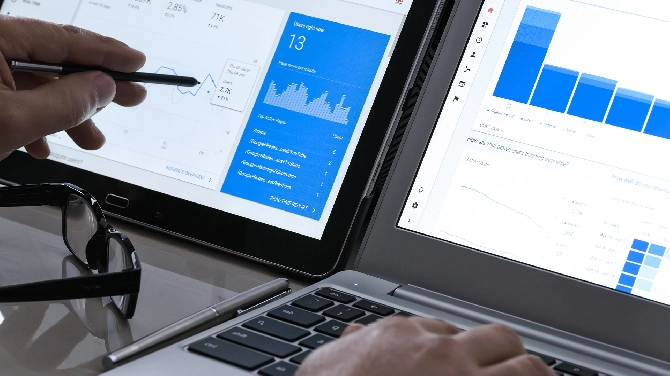
Helping SMEs get on Board with AI
Salvatore Minetti, CEO and founder, Prospex discusses the need for SMEs to embrace AI solutions.
There are very few businesses today that haven’t heard of artificial intelligence. After all, AI has been talked about as a ‘must-watch’ technology for a number of years.
However, despite the hype, the reality is that many small and medium sized enterprises are still yet to get to grips with AI and machine learning (ML). In fact, a survey of UK small business leaders in late 2017 revealed that only a third were using AI in some form within their operations.
It poses the question of why uptake among SMEs has been so slow.
Understanding the applications of AI
One of the answers is that there is a lack of understanding around the practical applications of AI.
As is common when a technology rises to prominence, there is a huge amount of noise regarding all the revolutionary things that it could one day enable individuals or organisations to do. Business intelligence, cloud computing and big data all experienced this. But to gain an appreciation of exactly how a technology could help businesses, it is more beneficial to look at specific use cases among companies of different sizes and sectors.
As the AI market matures, examples of AI transforming SMEs’ practices and processes will become more common, in turn giving a much clearer understanding of how others could follow suite.
In the short-term, it is useful for small businesses to think of AI as a means of completely reversing its decision-making process. While traditional BI and data analytics have enabled firms to gain deeper insights into events that have already happened, AI and ML can tell us what will happen next.
Ultimately, AI works by analysing huge amounts of data from a wide range of sources. It establishes the outliers and trends in real-time and, importantly, it can then recommend potential actions. As such, AI produces forward-thinking results. From generating new leads for an SME’s sales team through to enabling marketers to accurately personalise social media campaigns, AI delivers greater intelligence to help a small business make better decisions.
The costs are not prohibitive
Once an SME has developed an understanding of exactly what AI is and how it could be implemented to improve their operations, the next barrier to overcome is the cost. Yet in reality, the pricing structure of many providers is such that even microbusinesses can afford to embrace new technological solutions.
Cloud computing has been essential in this development; the as-a-service model, which allows for businesses to pay only for what they need on a subscription basis, has gone a long way to levelling the playing field between small and large companies. No longer does an organisation require significant capital expenditure to invest in or develop new technology – today, small businesses can pay on a monthly or yearly basis for enterprise-class tech, including industry-leading AI tools.
There is another challenge when looking to adopt AI solutions though: separating genuine providers from those who are merely looking to capitalise on the rise of a new buzzword. Generally, when a new technology becomes touted as ‘the next big thing’, many firms begin claiming that they are offering tools that incorporate this tech. AI is certainly no exception.
Again, SMEs must make sure they understand exactly what AI is and how it differs from its predecessors. Being diligent when assessing potential AI solutions is also important – making sure a provider has relevant case studies is recommended.
Resetting the balance
While it may require an investment of time from SMEs to better understand AI and source prospective suppliers, it’s vital that this opportunity to gain a competitive advantage is not overlooked. And importantly, when it comes to tilting the balance back in favour of smaller businesses rather than their larger competitors, AI can have a big role to play.
Typically, small firms are more agile – the leadership team will have oversight over the entire operation with communication between all parties quicker, easier and more regular. That, in turn, makes decision making simpler.
When it comes to embracing new technologies such as AI, this means that there is a shorter time between starting the initial fact-finding mission and actually having new solutions implemented in the business. This agility, combined with the lack of red tape and legacy IT systems, gives SMEs the edge over large enterprises.
AI can have a significant impact in boosting an SME’s progression. As well as providing better insights into its practices and processes, it can also present opportunities that a business did not know existed. Now it is undoubtedly the time for small businesses to get on board with AI – by realising the transformative potential of artificial intelligence, even the smallest companies can begin benefiting from the competitive advantage it can deliver.
If you want to learn more how SMEs can benefit from AI, Prospex will be hosting a free event on the topic on Wednesday 18 April in London. For more information or to register for tickets, click here.
 Business Advice25th July 2023A Guide to GA4 for Small Businesses
Business Advice25th July 2023A Guide to GA4 for Small BusinessesGoogle Analytics 4 (GA4) is Google's latest analytics tool, taking the mantle from Universal Analytics tool as of July 2023.
 Finance8th March 2023Top Investment Trends To Witness In 2023
Finance8th March 2023Top Investment Trends To Witness In 2023The digital landscape has been growing faster than ever, and investment trends are also taking new forms. Companies, financial sectors, and other industries are adopting new ways and strategies to plot the difference among competitors.
Every quarter we offer a new issue of SME News which is published on our website, shared to our social media following and circulated to in excess of 78,000 individuals from various sectors across the UK SME marketplace.
Expand your reach.
Grow your enterprise.
Secure new clients.





